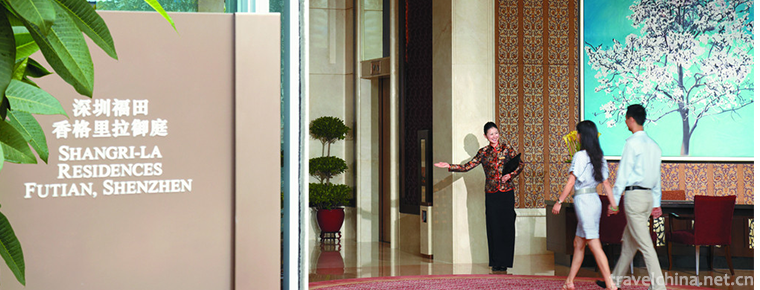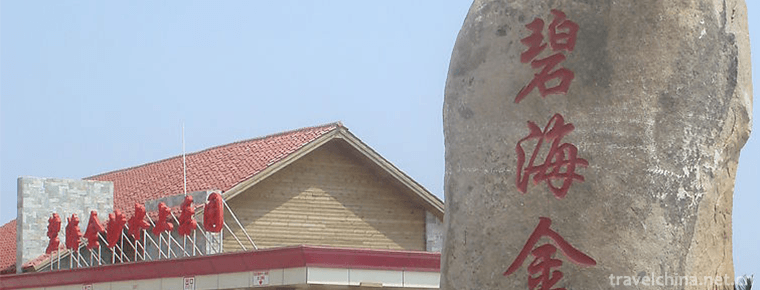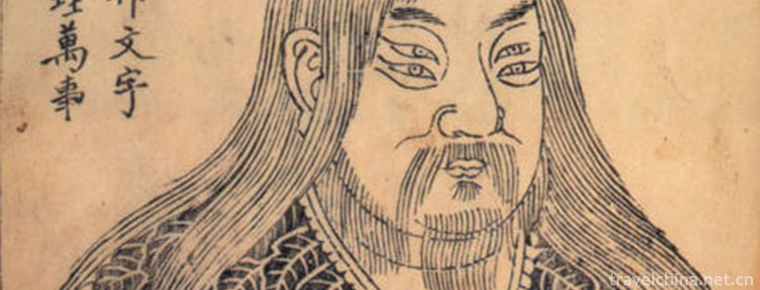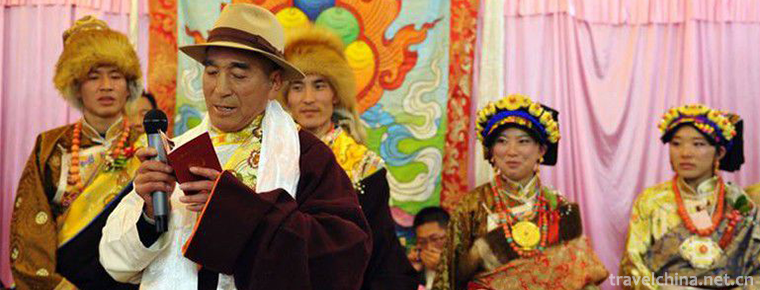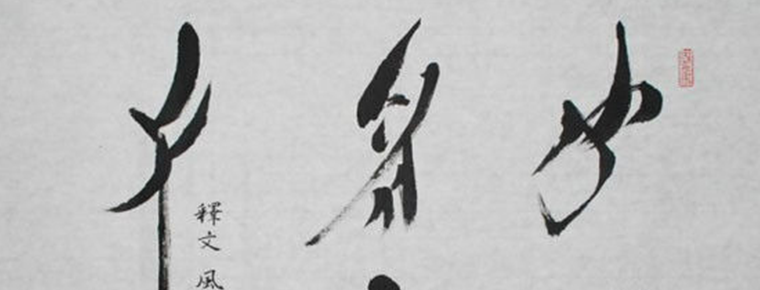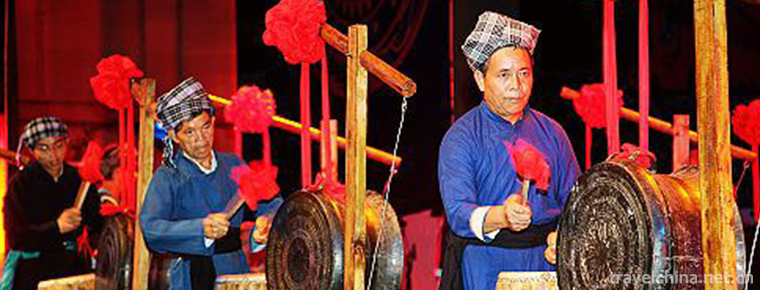kylin dance
kylin dance
Kirin dance, also known as "Wu" Kirin, is a court dance performance of the Ming Dynasty in China. It was spread among the people when the Nanming Dynasty perished. When dancing, one person dances Kylin Head and one person dances Kylin Tail, and two people cooperate with each other tacitly, so as to vividly express the joy, anger, sadness, joy, surprise, suspicion, drunkenness and sleep of the legendary Kylin. On New Year's Day, people dance Kirin to express their good wishes of welcoming good fortune and praying for good weather and national peace.
Kirin is a kind of animal representing auspiciousness in ancient Chinese legends. It is called "Four Spirits" together with phoenix, turtle and dragon. It ranks first among the "Four Spirits". There is the saying of exorcising evil spirits and avoiding ghosts among the people. People of all dynasties regard it as a symbol of auspiciousness. The image of Kirin has a history of more than 2500 years in China. For a nation, it has developed from a totem, a belief to a philosophical significance, and then into the literary field, finally to plastic arts and performing arts. This shows that Kirin has evolved from a "myth and legend" to a "cultural phenomenon". Kirin dance, as a carrier of Kirin culture and a rare kind of dance, is still active in the folk. The "Daliuzhai Kirin Dance" in Liudi Town, Suxian County, Henan Province is its typical representative. Guangdong Province is a region where Kirin dance is widely spread.
Kirin dance, which integrates music, dance, arts and crafts and acrobatics, has not only aesthetic appreciation value, but also literary, religious, folk and historical research value, which is a precious property left by our ancestors to the descendants of China.
On June 7, 2008, the Qilin Dance declared by Lankao, Huanghua and Haifeng was listed in the second batch of national intangible cultural heritage list by the State Council.
In May 2011, the "Kirin Dance" declared by Suxian, Houma, Shenzhen and Dongguan was included in the second batch of national intangible cultural heritage "Kirin Dance" projects by the State Council in the form of an expanded project list.
Historical Evolution
According to historical records such as Daming Unified Chronicle, Qixian Chronicle and Feng Family Genealogy, "Qi County Chronicle"
Lindan Dance, originally only a performing art in the palace, is called "Qilin Holy Dance", which is a necessary performance in various royal celebrations. When the Nanming Dynasty perished (1661 A.D.), Wenlin Lang Feng Weigui, who was in charge of palace culture and entertainment, returned to Lixian County, Henan Province. He brought a pair of "Kirin Peels" to the Feng people in Daliuzhai Village, Suxian County, and personally taught the skills of dancing. Kirin dance originated from the Feng family has passed on for 15 generations and has gone through more than 35 years of history. In the late Ming Dynasty, "Qilin Dance" flowed into the folk of Lixian County from the imperial court. As the Royal dance inherited by the Feng family form, it basically retained the dance style and original form of the Ming Dynasty more than 300 years ago. The teacher-inheritance relationship of Qilin Dance is special. The conditions for selecting performers are quite strict, forming performance groups, continuing from generation to generation, and emphasizing that the skills learned are not allowed to be passed on.
The Qilin Dance in Guangdong Province witnesses the migration of Hakkas from the north to the south. It is accompanied by gongs, drums and suonas. It has a typical style of Flower Fairs in the Central Plains, which is different from Lingnan music in Guangdong Province.
Similarly, it is the art and culture handed down from generation to generation by the Hakka people.
In February 2007, Kirin Dance in Suxian County was listed as the intangible cultural heritage of Henan Province.
On June 7, 2008, the Qilin Dance declared by Lankao County, Huanghua City and Haifeng County was included in the second batch of national intangible cultural heritage list by the State Council.
In May 2011, Kirin Dance declared by Suxian, Houma, Shenzhen and Dongguan was included in the second batch of national intangible cultural heritage items by the State Council in the form of an expanded project list.
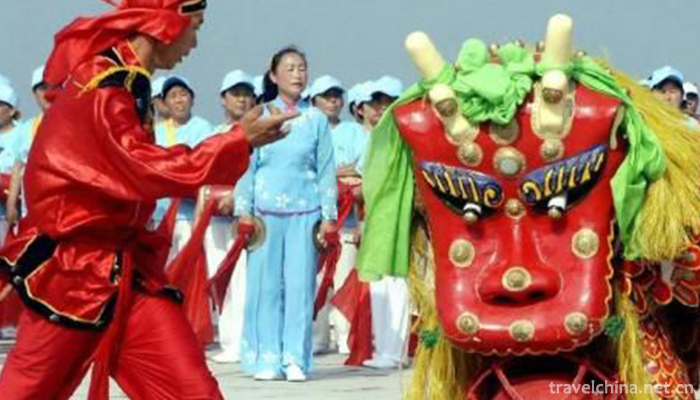
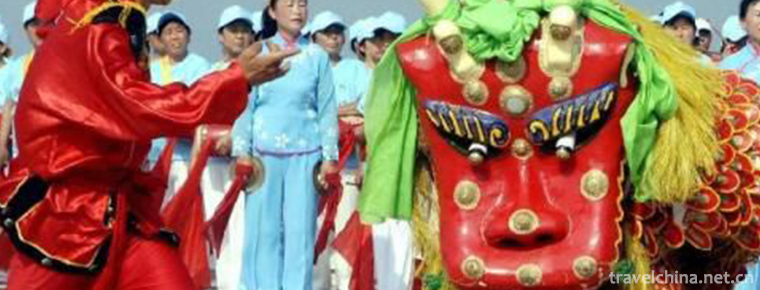
kylin dance
-
Alipay
Alipay (China) Network Technology Co., Ltd. is the third party payment platform in China. It is committed to providing a simple, safe and fast payment solution
Views: 236 Time 2018-11-13 -
Futian Shangri La Hotel Shenzhen
The second Shangri-La Hotel Group, Shenzhen Futian Shangri-La Hotel, is located in the downtown area of Futian Business District. It can easily reach Shenzhen Convention and Exhibition Center, large s
Views: 700 Time 2018-12-16 -
Jinshan City Beach Shanghai
Jinshan City Beach is located in Jinshan District of Shanghai, located in the southwest of Shanghai and the North Bank of Hangzhou Bay. It is adjacent to Pinghu and Jiashan City in Zhejiang Province
Views: 189 Time 2018-12-19 -
Bihai Jinsha Water Paradise
Bihai Jinsha Water Paradise (i.e. Coastal Recreation Park, abbreviated as "Water Paradise") is built outside the flood control wall, along the flood control wall 1313 meters
Views: 472 Time 2019-01-03 -
Legend of Cang Jie
Cangjie Legend is an ancient Chinese folklore. The story of Cangjie's writing originated from the Yan and Huang Dynasties and has a history of 5,000 years. Legend has it that in
Views: 236 Time 2019-04-04 -
Eighteen Sayings on Tibetan Wedding Banquet
The Eighteenth Tibetan Wedding Banquet is a kind of folk oral literature spread in the Tibetan inhabited areas of the eastern agricultural region of Qinghai Province. Its manifestation is the eighteen
Views: 138 Time 2019-04-07 -
Jiangxi opera
Gan Opera is a traditional opera which sings high-pitched, random-play, Kun Opera and other tunes in a multi-tone way. The dialect used is Gan dialect. Its origin and predecessor
Views: 111 Time 2019-04-30 -
Female Book Custom
Jiangyong Nu Shu in Yongzhou, Hunan Province, is the only special written language for women in the world. Its development, inheritance and cultural information as symbols constitute the custom of wom
Views: 133 Time 2019-06-08 -
Twelve tunes of bronze drum
The Buyi bronze drum is one of the ancient percussion instruments of the Buyi nationality, which belongs to the precious national cultural heritage. It is made of bronze, often mixed with Suona, drums
Views: 132 Time 2019-06-21 -
Rongxian Gaoshiti Forest Park
The landform of Gaoshiti Forest Park is peculiar, with boulders, odd peaks, valleys and streams forming a typical natural landscape of low mountain landform in southern Sichuan. Gaoshiti Forest Park covers a total area of 182.13 hectares. It was approved as a provincial forest park by the provincial forestry department in 1993.
Views: 180 Time 2020-10-15 -
Deyang Deyang transportation
By the end of 2018, the total mileage of Deyang highway was 8345.2 km, including 7861.0 km of grade highway, accounting for 94.2% of total highway mileage; 655.8 km of high-grade highway and 205.5 km of expressway. The railway operating
Views: 260 Time 2020-12-14 -
Guangyuan history and culture
"Guangyuan daughter's day, women swim in the river bay", this is a kind of folk cultural activities, this is the chapter described by Guangyuan daughter's day. On the first daughter's day in 1988, the water area of Jialing River in front of huangze temple was
Views: 155 Time 2020-12-15

